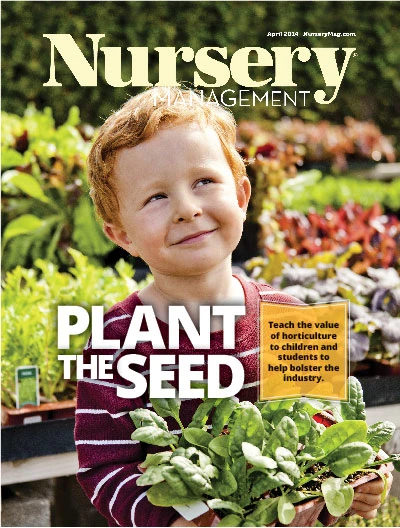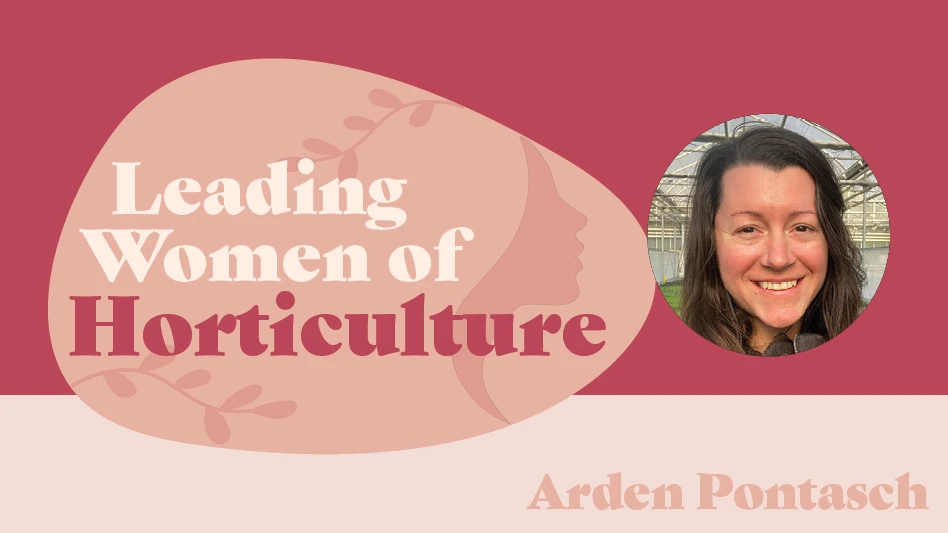 Steve Mercer, founder of Preston Greenhouse in Louisville, Ken., is working with several horticulture companies (including growers and container manufacturers) to create a new standard regarding the improvement and standardization of quality root systems. Nursery Management caught up with Mercer to learn more about his proposal.
Steve Mercer, founder of Preston Greenhouse in Louisville, Ken., is working with several horticulture companies (including growers and container manufacturers) to create a new standard regarding the improvement and standardization of quality root systems. Nursery Management caught up with Mercer to learn more about his proposal.
Q: Before we discuss your proposed nursery standard, please explain the American Standard for Nursery Stock and its significance to the industry.
A: The American Standard for Nursery stock is based on the ANSI (American National Standards Institute) ANSI-Z60.1 standard. AmericanHort is now the administrator of the standard through their standards committee. The accreditation credentials are administered through ANSI. The standards committee is a group of industry professionals who volunteer to periodically review the current standard and update the standard. The committee is currently in final review of the current standards revision to be published in May of this year.
The ANSI-Z60.1 is a voluntary consensus based standard which establishes how trees and shrubs are graded and minimum size requirements to meet specific caliper, height or spread (in the case of shrubs). The standard addresses both liners and finished nursery stock, and lists appropriate standards in many types of growing systems.
Q: What does your proposed nursery standard cover?
A: The industry needs a new standard – in addition to the current standard – to facilitate the improvement and standardization of quality root systems. This proposed standard would enable those nurseries, plant specifiers and buyers who wish to participate in the new standard, a mechanism to grow and specify plants in the nursery industry that deliver a superior root system.
The proposed standard would require growers to grow plants from propagation through the final production phase in some form of root-pruning container. The new standard would require growers, rewholesalers and landscapers to continue to shift plants up into larger root-pruning containers throughout the production and holding of the plant. These root-pruning containers could either be above-ground containers or in-ground containers, such as in-ground grow bags. Growers would be required to insert a near field communications (NFC) tag 1-1½ inches into the soil close to each plant at propagation time. Each tag has a unique serial number. The tags can be scanned using a smartphone in the field. There will also be a cloud component to this system accessible from the internet. As growers shift plants up to the next container size they can update the status of each plant. The software would be overseen by AmericanHort and would be paid for through the purchase of the NFC tags by growers. When a shipment of trees arrives on a job-site, the tags will reveal a complete growing history, including which growing containers were used and when they were transplanted. The software would flag any violations of plants that did not meet the standard (usually because they were not shifted up during the window set forth within the standard or a non-approved container was used).
By putting the chip close to the tree or shrub in the container, the tag would always follow the plant. This would also help the buyers in ensuring that plants are shifted up regularly and that what they are receiving is of the highest quality available under the new standard. The estimated cost of the the NFC chips is about 30 to 40 cents each. The price will decrease as more of the industry adopts the new standard.
There is a consortium now forming to propose this new root pruning standard to the AmericanHort standards committee.
Q: Is the proposed standard for root systems an addendum to the current nursery production standards?
A: Actually, we are proposing an additional but separate standard. A new but separate standard is needed because in the case of developing superior root systems, not all production systems are capable of meeting this standard. I am sure that many B&B growers who root prune regularly would argue that they are capable of producing a well-branched root system, and they can to a degree. However they won’t be able to produce the same type of root system that is produced under a growing system where the plants are under continual daily root pruning from propagation through final sale to the end customer.
We are not proposing a change to the current standard of nursery production. This does not exclude any grower or buyer who desires to continue to grow or buy plants based on the current industry standard. I want growers to understand that we’re not forcing them to change their production practices. If growers want to continue growing B&B trees, they’re welcome to keep producing trees that way, and the current ANSI-Z60.1 standard would still apply to those growers.
The new standard would, however, provide a mechanism for growers and buyers who wish to participate in an additional standard where the plants would have a far superior root system. The new standard would continue to use the current standard to grade the above-ground portion of the plant.
Q: What was the driving force behind drafting this proposed standard?
A: The current standard has very little information about the grading of the root system. The emphasis has been the tops of plants or what’s above ground for grading purposes (except for establishing the minimum size root ball of tree or shrub in any plant size). Part of the new proposed standard should include ways to develop a superior root system. The goal of any producer should be to provide a product that has a far-superior root system than what’s currently available. For example, one of the current problems the industry is facing is that many container-grown trees were not repotted up to larger sizes after the crash of 2008. Many containerized trees are showing up on job sites completely root bound in those containers.
Now more than ever it is critical that consumers who invest in our products have nothing but success with them. Several other organizations have attempted to write standards for what happens at transplant and beyond, but our industry as a whole has a vested interest in ensuring that there is a standard for tree growing, shipping and transplant, and post-transplant care. We are the tree experts and we as an industry should be setting these standards and not leaving it up to someone else to have control over our financial futures. I believe it is in the industry’s best interest to sit down with these other industry groups and come up with a comprehensive nursery standard that specifies proper procedures, accepted growing practices, shipping, transplanting and post-transplant care of trees and shrubs.
Q: Why did you choose the root-pruning method to include in the proposed standard?
A: Root-pruning production methods have been around a long time. The real changes began about 25 to 30 years ago with the invention of the in-ground grow bag. Since then you can find root pruning containers from propagation through finished nursery stock.
Root-pruning containers provide a more fibrous root system because the root systems are under constant pruning 24 hours a day, seven days a week. In-ground grow bags offer additional economic benefits regarding shipping and labor. For example you can dig and ship a 4-inch caliper Type 1 shade tree in a 24-inch diameter root ball with in-ground grow bags versus a 44-inch B&B root ball. Both trees meet the current American Nursery Standard. You can summer dig with in-ground grow bags much more successfully than with other in-ground production methods because the in-ground grow bags have approximately 93 percent of their root systems inside the in-ground grow bag. Growers have the opportunity to grow more trees per acre with in-ground grow bags because the trees do not require hydraulic tree spades mounted on skid loaders to harvest the trees. This means that you can interplant in row middles with shrubs and harvest more plants per acre.
It is time to rethink the old ways and start producing a superior product for customers, and saving them money on shipping costs and installation costs will provide the competitive edge required in today’s challenging economy.
Landscape architects will rally behind a standard that improves the survivability of trees and saves the end customer on freight and installation costs.
Q: What do you need from the industry to proceed with the proposed root standards?
A: We’re looking for at least 2,000 signatures on a petition. We need signatures from all aspects of the industry – growers, landscape architects, garden centers, for example. To become a part of this movement and to sign the petition, email me at smercer@iglou.com and I’ll forward a link to a social media site where you can download a copy of the petition and the view the proposed standard. Sign the petition and mail it back to me. ANSI standards are consensus-based standards, so we need the industry’s help to move this forward.
Q: What’s the next step after the petition gets enough signatures from the industry?
A: Once the petitions are signed, I will present them in their entirety along with a copy of the new proposed standard to the AmericanHort Standards Committee for their review.
Get curated news on YOUR industry.
Enter your email to receive our newsletters.
Explore the April 2014 Issue
Check out more from this issue and find your next story to read.
Latest from Nursery Management
- Plant breeding as an art
- Society of American Florists accepting entries for 2025 Marketer of the Year Contest
- Sustainabloom launches Wholesale Nickel Program to support floriculture sustainability
- American Horticultural Society welcomes five new board members
- Get to know Christopher Brown Jr. of Lancaster Farms
- American Floral Endowment establishes Demaree Family Floriculture Advancement Fund
- The Growth Industry Episode 3: Across the Pond with Neville Stein
- The Growth Industry Episode 2: Emily Showalter on how Willoway Nurseries transformed its business






